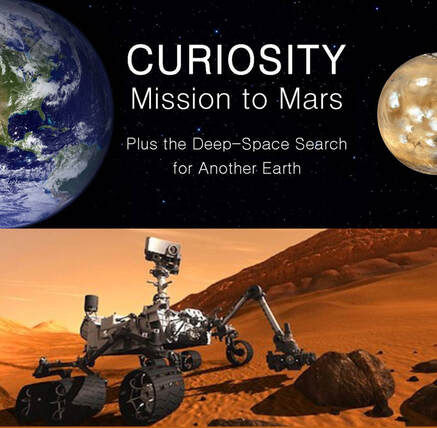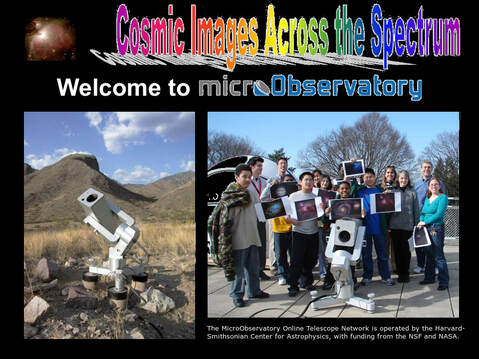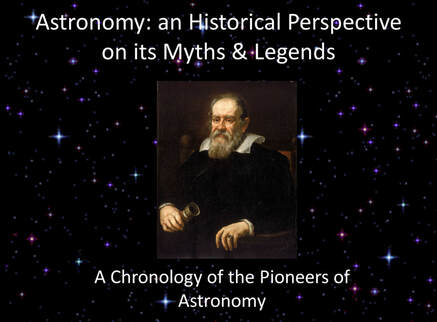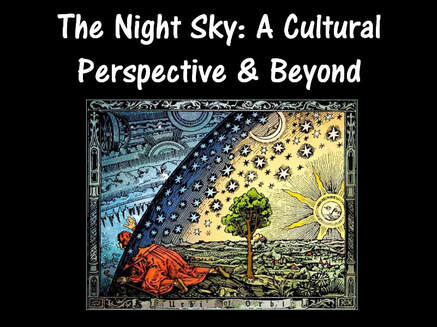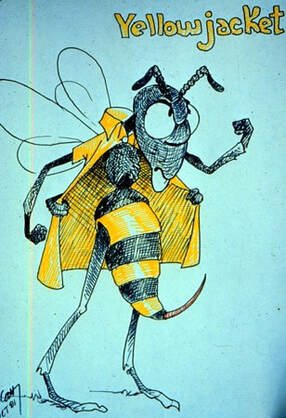Exciting Astronomy Programs for Individuals and the Entire Family, Libraries, Schools, Retirement Homes, Civic Organizations, Corporations, etc.!
All programs are approximately 90 minutes long with shorter versions available and use a Microsoft PowerPoint slide presentation with exciting video footage. Customized programs for any audience are available as well. Following each presentation, video recorded views through a powerful telescope of Jupiter, the rings of Saturn and craters on the Moon will be shown.
Virtual visitations from Look Up to the Stars remove the limits on providing a memorable experience for your family or group at any time. Our awesome virtual astronomy programs make learning about the universe a satisfying and incredible experience with live presentations using Zoom from an expert astronomer.
Virtual visitations from Look Up to the Stars remove the limits on providing a memorable experience for your family or group at any time. Our awesome virtual astronomy programs make learning about the universe a satisfying and incredible experience with live presentations using Zoom from an expert astronomer.
Here's what people are saying about these programs:
June 10, 2021: Kevin's program is so much fun and informative for those curious young minds. I would highly recommend to those who are interested in having STEM programs. - Gloucester City Library
May 25, 2021:Loved having this program at our library! I had just as much fun as the patrons! - Niki Gordon
May 20, 2021: Had everyone enthralled with his amazing presentation at our library. Everyone loved it! - Melanie Daniels
October 21, 2020: My son, Richard and I attended your lecture at the Hampton Bays library last week. Richard is still talking about it! He is so inspired about the universe -it is amazing to see him grow and learn. Attending your lecture was a real treat - thank you. - Jennifer Tiska
October 14, 2020: Everyone who attended the program was talking about it for weeks afterward. Thank you for providing such an enjoyable evening for our community. It was a very informative program and we appreciate all you did to make the evening such a success! - Carrie Falk, Library Director at Shenandoah Public Library
See our Testimonials Page for many more including letters.
June 10, 2021: Kevin's program is so much fun and informative for those curious young minds. I would highly recommend to those who are interested in having STEM programs. - Gloucester City Library
May 25, 2021:Loved having this program at our library! I had just as much fun as the patrons! - Niki Gordon
May 20, 2021: Had everyone enthralled with his amazing presentation at our library. Everyone loved it! - Melanie Daniels
October 21, 2020: My son, Richard and I attended your lecture at the Hampton Bays library last week. Richard is still talking about it! He is so inspired about the universe -it is amazing to see him grow and learn. Attending your lecture was a real treat - thank you. - Jennifer Tiska
October 14, 2020: Everyone who attended the program was talking about it for weeks afterward. Thank you for providing such an enjoyable evening for our community. It was a very informative program and we appreciate all you did to make the evening such a success! - Carrie Falk, Library Director at Shenandoah Public Library
See our Testimonials Page for many more including letters.
Program Topics Description
|
Exploration of the universe from the very small to the very large, looking at matter from subatomic particles to superclusters of galaxies, and the entire universe. It's a virtual journey throughout the cosmos describing celestial objects and how they were formed as well as their relative sizes compared with each other. Truly exciting images and video segments will keep you engaged.
|
|
A virtual journey visiting the Sun, planets, their moons, and debris left over from the earliest times of the solar system's formation. A detailed look at Pluto as the New Horizons spacecraft took very high resolution images of this elusive and controversial world after waiting 9 ½ years to reach it since launch in January, 2006. What a surprise it turned out to be, having more geologic activity than anyone thought possible. Also, a brief introduction to our exoplanet survey.
|
|
On August 5, 2012 we watched as the space rover Curiosity landed on Mars. Its mission: to explore Martian soil for evidence of water and microbial life. Listen to Kevin Manning share what scientists have learned from the probe so far; you won’t want to miss the many astounding images and incredible video footage of Mars and space. See the progress of an investigation to search for extrasolar planets among distant stars using detectors such as Kepler and others.
|
|
What differentiates these "small bodies" as remnants of the solar system's formation? Comets as omens of disaster and other superstitions are debunked. Ever seen a meteor streak across the sky, or better yet a meteor shower? What about the impending danger of asteroids or comets colliding with the earth? Several interesting pictures and illustrations serve to uncover these mysteries.
|
|
Will the asteroid Apophis hit the earth on Friday, April 13th, 2029? Were we really supposed to be doomed on December 21st, 2012? Did men really walk on the Moon during the Apollo program? These and many other stories, mythologies and fantasies about the universe will be addressed in the light of a modern understanding of the universe and its mechanisms.
|
|
Ever see the craters on the Moon, cloud belts and moons of Jupiter, or the ice crystal rings of Saturn before? An introduction of telescope types, function, performance, and accessories will help participants choose a telescope wisely. We can build a high performance telescope from the Galileoscope telescope kit.
|
|
Using NASA's MicroObservatory, participants will learn how to access robotic telescopes, take photographs of planets, galaxies, and nebulae and use image processing tools to bring out detail in these photos the same way that professional astronomers do. Gathering images of a selected object from different domains of the spectrum and adding data can form a cosmic quilt block. All students blocks can be adjoined together to form both a cyber cosmic quilt and a physical quilt when printed onto fabric and sewed together.
|
|
What causes a solar or lunar eclipse? What is a transit and a conjunction? Sometimes objects in space appear to collide with each other, though they are really far apart from each other. Here we will explore the natural causes of these and other celestial events. Many fascinating photos and video clips will serve to illustrate these occurrences.
|
|
Famous contributors to the body of knowledge of the inner workings of the universe, along with the obstacles to the paradigm shift required in accepting them, are examined in light of the progress made in our current models of the cosmos. People like Ptolemy, Brahe, Copernicus, Galileo, Newton, Einstein, and Hubble were pioneers of astronomy that helped us understand what's going in the universe. Modern astronomers have added to that knowledge exponentially with the advent of space telescopes operating across the entire electromagnetic spectrum, probes visiting and landing on other worlds, and particle accelerators contributing to our understanding of astrophysics and the early universe.
|
|
The Bible tells us that God created the heavens and the earth. This account in Genesis is continued throughout scripture. There is absolutely no disparity between what the Bible says and what is known in science. This wonderful portrayal of the beauty, symmetry and harmony of the universe will surely keep you at the edge of your seat the entire time.
|
|
Even though the Sun is 93 million miles from earth, it provides enough heat and light to sustain life as we know it. Let's explore our nearest star and its hidden intricacies in this exciting and informative program. The sun is our neighbor model of a star, and studying it closely has given us great insight into how a star forms, behaves, and its ultimate fate as stellar life cycles go. Death stars are those that don't go out quietly. Since we depend on the sun for its heat and light, it would behoove us to consider not only how it works, but when it will come to an end.
|
|
Astronomer Kevin Manning, a former consultant with NASA, looks into a modern understanding of matter and energy and how it is distributed throughout the cosmos. Should we have been concerned about December 21, 2012? What are the kinds of extraordinary events that occur in the universe and how can they affect us? Answers to these and other questions regarding dark matter and dark energy shall be explored using outstanding photos and video segments.
|
|
NASA's flagship X-ray telescope, the Chandra X-ray Observatory, is part of NASA's fleet of "Great Observatories," and is specially designed to detect X-ray emission from very hot regions of the universe. How has Chandra helped us understand the structure and evolution of the universe, from planets and black holes to dark energy, and the distribution of matter since the Big Bang? What makes Chandra such a powerful tool to help unveil such mysteries? Come explore the universe with Kevin for an overview of the tool and discoveries made by it during the past twenty years.
|
|
Was it a comet? A supernova? Science suggests something else. The Star of Bethlehem has left its mark on the gospels as well as a constellation of holiday songs. Was it purely a divine sign, created miraculously to mark Jesus’ birth? Or was it an astronomical event in its own right? There may be several scientific scenarios for the “Star of Wonder.”
|
|
Based on a model workshop given at Tufts University to teachers from across America and six other nations, Kevin offers professional development workshops for educators on using astronomy as an interdisciplinary approach to education. Participating educators will learn how to access robotic telescopes online using NASA's MicroObservatory, take photographs of planets, galaxies, and nebulae and use image processing tools to bring out detail in these photos the same way that professional astronomers do. They will also learn how to create thematic units that tap the talents and enthusiasm of students across disciplines. Finally, a "cosmic quilt" will be assembled for all to see.
|
|
Learn the scientific method of how research is conducted with another topic of interest I've had since college to study behavior of social insects. This is a fun and humorous account of a successful experiment I did back then. Several species of social wasps in different genera are known to use pheromones to communicate alarm at the nest site evoking recruitment, attraction, and/or attack. Alarm responses to venom or extracts of venom have been demonstrated for the yellowjackets. I report here pheromonal mediation of alarm and attack by workers of another species of yellowjacket, Vespula maculifrons, as a response to a solvent extract of conspecific worker wasps.
|
|
Pricing
Individual/Family $75 Save 20% for 3 or more programs Groups (Library, School, etc.) $375 Save 20% for 3 or more programs |
|







